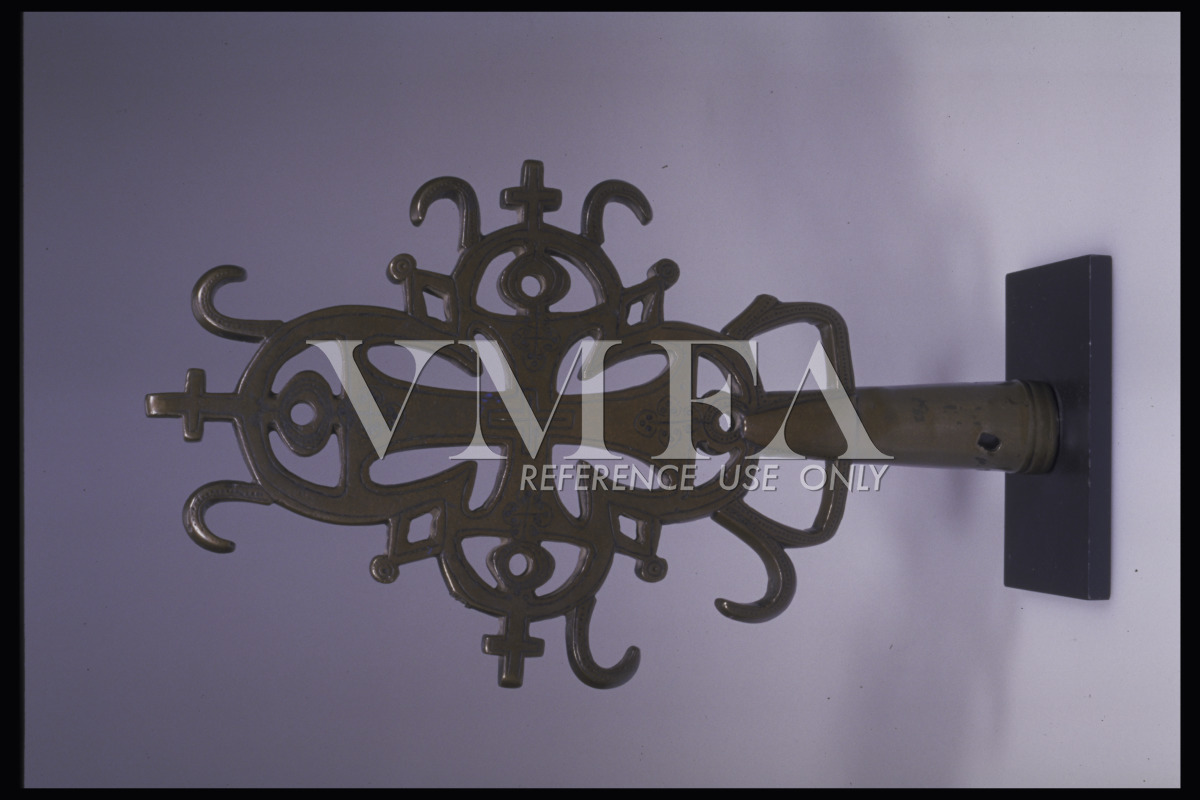
Processional Cross (Primary Title)
Unknown (Artist)
This cross is an example of the early style of processional crosses used in the Ethiopian Orthodox Tewahedo Church. A hollow shaft at the base of the cross permits the insertion of a wooden staff so that it can be lifted and carried in religious processions. The overall design of the cross follower Byzantine and Coptic models, but Ethiopian crosses have a unique feature: two loops at the base provide for hanging a cloth from the cross during processions.
Christianity came to Ethiopia in the early fourth century, after two Syrian Greek Christians, Frumentius and Aedesius, were shipwrecked on the coast of the Red Sea. When they were brought to the capital, Aksum, and met the king, he approved of their missionary efforts. Frumentius was eventually made a royal scribe and treasurer and the Patriarch of Alexandria later consecrated him Bishop of Ethiopia.
Some object records are not complete and do not reflect VMFA's full and current knowledge. VMFA makes routine updates as records are reviewed and enhanced.

